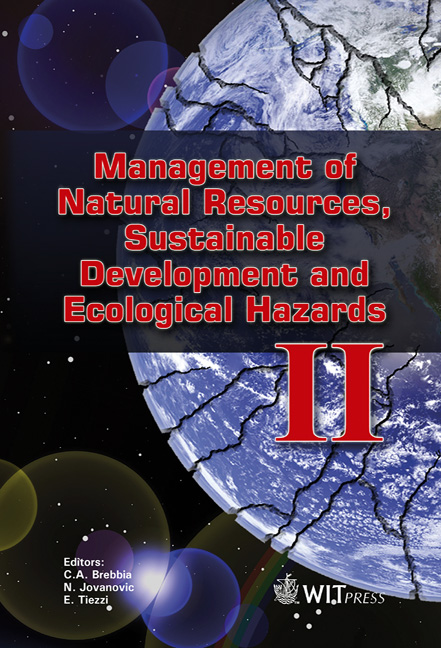Dilution And Dispersion Of Inhalable Particulate Matter
Price
Free (open access)
Transaction
Volume
127
Pages
10
Page Range
229 - 238
Published
2009
Size
605 kb
Paper DOI
10.2495/RAV090201
Copyright
WIT Press
Author(s)
N. A. Kgabi & T. Mokgwetsi
Abstract
In this study, HYSPLIT model was used to simulate the dilution and dispersion of particulate matter concentrations that were measured at three sites (RMINE, RCBD and RBPS) in the Rustenburg area. The three sites experienced average monthly dispersion of over 100, 120 and 130 km for RMINE, RCBD and RBPS respectively. The effect of meteorological parameters like temperature, wind speed and wind direction on aerosol dilution and dispersion was also determined. The profiles obtained showed that high wind speeds (>11 m/s) dilute and disperse pollutants more rapid over long range; and low temperatures of 2 degree celsius or below cause pollutants to reside within a source region. The results showed that wind speed causes more dispersion than it causes dilution whereas increase in temperature causes more dilution than dispersion; hence more dilution was observed in summer than in the winter season. The study suggests that stagnant air, often caused by an anticyclone or temperature inversion, or other lack of winds cause air pollution to remain in one area; thus causing the air quality to worsen due to lack of dilution of air emissions. An inversion can prevent the rise and dispersal of pollutants from the lower layers of the atmosphere and cause a localized air pollution problem. This study further suggests that meteorological conditions like temperature, wind speed and wind direction are the key determinants of dilution and dispersion of pollutants. Keywords: HYSPLIT, dilution, dispersion, meteorological parameters.
Keywords
HYSPLIT, dilution, dispersion, meteorological parameters





